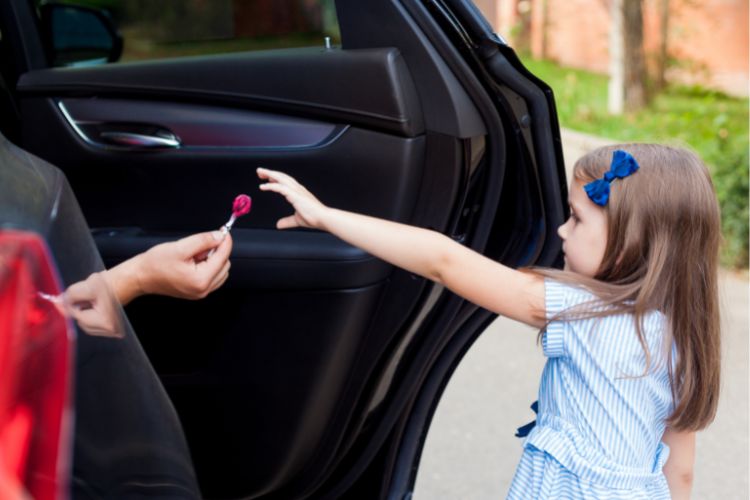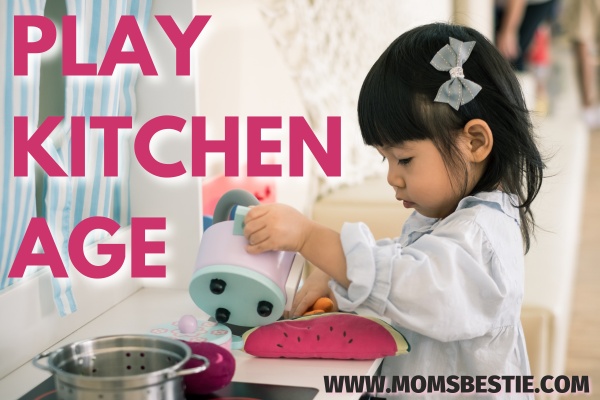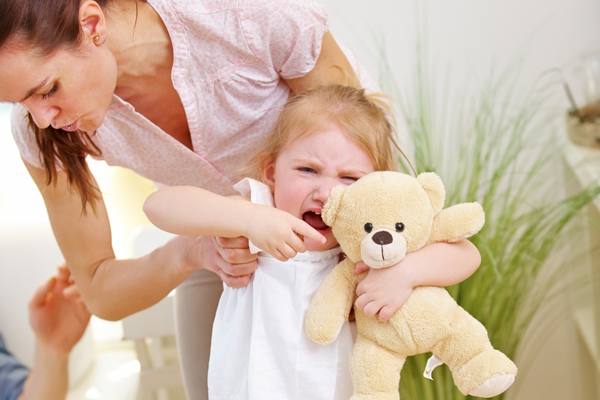Will Ceiling Fan Make Newborn Sick?
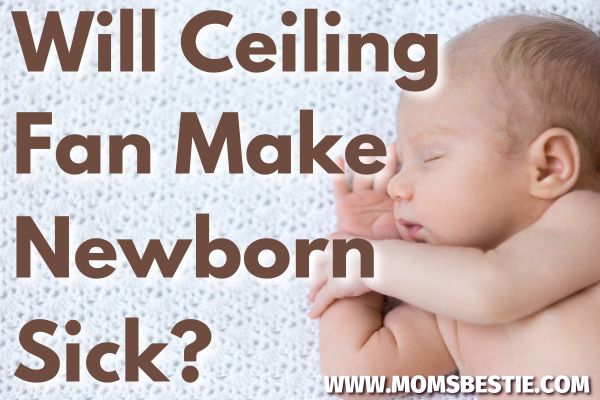
Ceiling fans are a common feature in many homes, providing a simple and effective way to circulate air and keep rooms cool.
However, you might be concerned about the impact of ceiling fans on your newborn.
After all, babies are more susceptible to illness and may be more sensitive to changes in temperature than adults.
So, will ceiling fans make newborns sick? Not in the ideal circumstances, but the answer is not that simple.
Let’s talk about the potential risks and benefits of using ceiling fans around newborns, and explore some important factors to consider when deciding whether or not to use a ceiling fan in your baby’s room.
How Do Ceiling Fans Work?
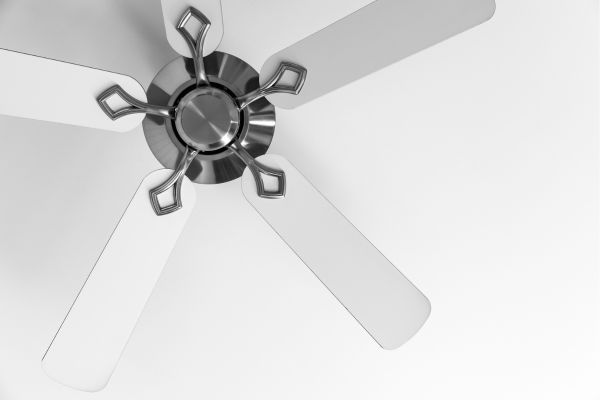
Ceiling fans work by using the principles of air circulation to create a cooling effect.
The basic design of a ceiling fan includes a motor that powers a set of rotating blades, which move through the air and create a flow of air in the room.
The rotation of the fan blades creates a downward force that moves air downward and creates a breeze that can help to evaporate sweat from the skin, which can make a person feel cooler.
This effect is known as the wind chill effect, which makes you feel cooler than the actual temperature in the room.
They can also help to circulate air in the room, which can help to distribute cool air from air conditioning or heating systems more evenly throughout the space.
This can help to reduce energy costs and improve overall comfort in the room.
Most modern ceiling fans have different speed settings that allow you to control the amount of air movement in the room.
In addition, some ceiling fans come with reversible blades that can be adjusted to spin in either direction.
This feature can be useful in both warm and cool weather, as it allows you to use the fan to circulate warm air in the winter and cool air in the summer.
How Is The Body Temperature Regulated In Newborns?
Newborns have a limited ability to regulate their body temperature compared to adults.
This is because they have a higher surface area to body weight ratio, which means that they lose heat more quickly than adults.
Additionally, they have a limited ability to shiver, which is a natural response to cold that helps generate heat in the body.
To regulate their body temperature, newborns rely on several mechanisms.
One of the most important is thermogenesis, which is the process of generating heat in the body.
Newborns can generate heat through metabolic processes, such as breaking down fats and sugars for energy.
They can also generate heat through non-shivering thermogenesis, which involves the conversion of brown fat into heat.
Brown fat is a special type of fat that is primarily found in newborns and helps to regulate body temperature.
They also rely on external factors to regulate their body temperature.
For example, keeping a newborn in a warm environment, such as a swaddle or a warm room, can help to prevent heat loss.
Skin-to-skin contact with a caregiver can also help to regulate body temperature, as the caregiver’s body heat can help to warm the newborn.
Breastfeeding can help to regulate body temperature, as breast milk is easily digested and can help to generate heat in the body.
What Is The Ideal Room Temperature For A Newborn?
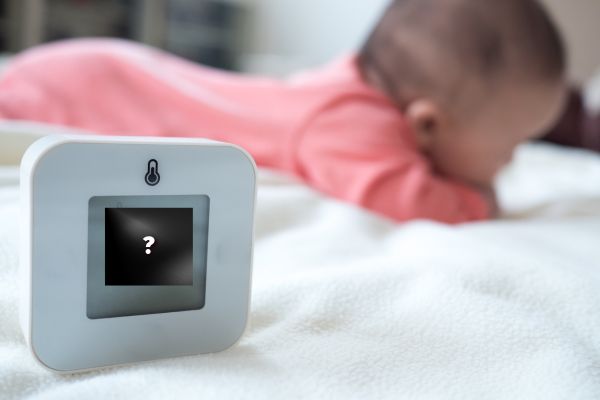
The ideal room temperature for a newborn is between 68°F to 72°F (20°C to 22.2°C).
This temperature range is considered comfortable and safe for most newborns and can help to prevent overheating or chilling.
It’s important to note that they have a limited ability to regulate their body temperature, so it’s important to monitor the room temperature and adjust it as needed.
Overheating can be dangerous as it can increase the risk of Sudden Infant Death Syndrome (SIDS).
Newborns should be dressed in clothing that is appropriate for the temperature and should be monitored regularly to ensure that they are comfortable and not too warm or too cold.
Will Ceiling Fan Make Newborn Sick?
Ceiling fans will not make a newborn sick, provided that the fan is used correctly and the room temperature is appropriate.
In fact, it can help to create a comfortable environment for a newborn by circulating air and creating a gentle breeze.
You may be concerned that the moving air from a ceiling fan can cause a newborn to catch a cold or develop respiratory problems.
However, there is no evidence to suggest that a properly functioning ceiling fan can cause illness in newborns.
In reality, circulating air can help to prevent the buildup of stagnant air and reduce the risk of airborne illness.
It’s important to note that the speed and direction of the fan should be adjusted appropriately for the temperature and the newborn’s comfort.
A fan should not be used to cool a room beyond the recommended temperature range, and the newborn should be dressed appropriately for the temperature.
As with any environmental factor, it’s important to monitor the newborn to ensure that they are safe and healthy.
Benefits Of A Ceiling Fan In Newborn’s Room
Using a ceiling fan in a newborn’s room can provide several benefits that promote a comfortable and healthy environment.
Promotes Air Circulation
A ceiling fan can help to circulate air in a room, which can reduce the risk of stagnant air and improve indoor air quality.
This reduces the risk of respiratory problems and other illnesses.
Reduces the risk of SIDS
A ceiling fan can help to regulate the temperature in the room and prevent overheating, which is a risk factor for SIDS.
It is recommended to keep a baby’s room at a temperature between 68°F to 72°F (20°C to 22.2°C) to reduce the risk of Sudden Infant Death Syndrome (SIDS).
Creates A Soothing Environment
The gentle hum and motion of a ceiling fan can create a soothing environment for a newborn. This can help to calm the baby.
Reduces Noise
A ceiling fan can help to reduce noise from other sources, such as street noise or household appliances.
It creates a more peaceful environment for a newborn and improves sleep quality.
Saves energy
It can help to reduce the need for air conditioning, which can save energy and reduce electricity bills.
This can also help to reduce the environmental impact of using air conditioning.
Helps With Eczema
Eczema is a common skin condition that can cause dry, itchy, and irritated skin in newborns.
A ceiling fan can help to reduce moisture in the air, which can help to prevent eczema flare-ups.
The gentle breeze from the fan can help to soothe and cool irritated skin.
Dos And Don’ts Of A Ceiling Fan In A Newborn’s Room

Dos:
Check That The Fan Is Installed Properly
Make sure that the ceiling fan is installed securely and properly.
Check that the fan is not loose or wobbling and that it is attached to a stable ceiling fixture.
If you’re unsure, consult a professional electrician to ensure that the fan is installed safely and securely.
Use The Fan At A Low Speed
Set the fan to run at a low speed to avoid creating too much airflow that could be uncomfortable or even dangerous for the newborn.
High speeds can create a draft that may cause the baby to lose heat and become too cold.
A low speed will help to circulate the air without causing any discomfort.
Keep The Fan Clean
Dust and debris can accumulate on the fan blades, which can affect indoor air quality.
Clean the fan blades regularly to keep the air clean and free of irritants.
Dust buildup can also make the fan less efficient and make it work harder, which can increase noise levels.
Use The Fan To Complement Air Conditioning
A ceiling fan can help to reduce the need for air conditioning, but it should not be used as a substitute for air conditioning in extreme heat.
When used in combination with air conditioning, the fan can help to circulate the cool air throughout the room more effectively, which can lead to energy savings and a more comfortable environment.
Don’ts
Using A Fan With Dangling Cords
Dangling cords on a ceiling fan can be a safety hazard for the baby.
Make sure to choose a fan with short cords or a flush-mount fan that doesn’t have cords at all.
If you already have a fan with long cords, make sure to secure them to prevent them from hanging too low.
Using Hangings On The Fan
Avoid hanging any objects, such as mobiles or toys, on the ceiling fan as it can be a potential hazard for the baby.
The fan blades can catch these objects, causing them to fall on the baby or create a choking hazard.
It’s better to keep the fan clear of any objects to ensure the baby’s safety.
Placing The Fan Directly Over The Crib
It can cause too much airflow, which can be uncomfortable for the baby causing difficulty in breathing.
How To Check If Baby Is Uncomfortable?
To check if a baby is uncomfortable or if the temperature in the room is not right, you can feel the baby’s forehead, chest, or back to see if they are sweating or feeling too hot.
Observe their behavior, if they’re fussy or crying, which can be a sign that they’re too hot or cold.
If the baby is sweating, remove a layer of clothing or adjust the room temperature to a cooler setting.
You can also feel their feet, if it is too cold then you can switch off the fan and add another layer of clothing.
To Conclude
Using a ceiling fan in a newborn’s room can have numerous benefits, including improving air circulation, reducing the risk of SIDS, and preventing eczema.
However, it’s crucial to ensure that the fan is installed correctly, cleaned regularly, and used appropriately.
By following the dos and don’ts of using a ceiling fan in a newborn’s room, you can ensure that your baby is comfortable and safe.
Read Next: Why Do Babies Stare At Me?
